Greetings, my fellow Mellons! No offense meant, it's "Friend" in Elvish, just like Gandalf used "Mellon" to open the gates of Moria. You are my friends, my Mellons! Today, I’m thrilled to share something unique: my first-ever sponsored item review, brought to you by Only Crits.
https://www.onlycrits.com/elvenmaidinn
Only Crits crafts premium D&D and TTRPG dice sets that elevate your gaming experience. From sharp-edged resin to metal and gemstone dice, their designs, like the bold F*ck Dice collection or the enchanting Transparent Ducky set, bring style and attitude to every roll. Each set is balanced for casual play, with clear, high-contrast numbers to keep your story flowing without squinting or slowing down.
Before we continue, a quick disclaimer. I, Elven Maid Inn, am part of the Only Crits Affiliate program. I gain 5% for every purchase that uses code ELF at checkout, and I also received the product I’m about to review for free. Please keep that in mind while reading my review. That being stated, I am a Dice Goblin. I love hoarding dice and get easily excited about a new set, so as much as I wish to be objective, I’ll have a certain bias toward these dice, especially since they were provided free of charge.
Who doesn’t love dice? Right? Dice are an essential part of Tabletop Role-Playing Games since their inception. Dave Arneson wasn’t pulling straws from his hat while showing Blackmoor to Gary Gygax in Lake Geneva in November 1972; he was rolling dice. Now I’m waiting for my dear friend Robert Kuntz to show up in the comments saying, “Well, actually, they were pulling numbers from a magical hat,” and he’d be right because he was there and witnessed the birth of our hobby. But I digress, dice are essential in our hobby. Nearly all TTRPG systems use them to decide random outcomes of combats, skill checks, and events. Yes, some TTRPGs moved away from dice, like the Dread system that uses a Jenga Tower or the Fate Core System that uses fate dice but can also be played with tokens or narrative-driven mechanics. But before we dive into my beautiful dice review, let’s explore something I love to do: the history of polyhedral dice.
History of Polyhedral Dice in TTRPGs
D20 (Twenty-Sided Die)
The d20, or twenty-sided die, is perhaps the most iconic die in tabletop role-playing games (TTRPGs), particularly due to its central role in Dungeons & Dragons (D&D). Its origins trace back to ancient times, with twenty-sided dice found in archaeological sites, such as those from ancient Egypt and Rome, often used for games or divination. However, its modern use in gaming began with the creation of Dungeons & Dragons by Gary Gygax and Dave Arneson in 1974. The d20 was adopted as the core mechanic for resolving actions in D&D, determining the success or failure of attacks, skill checks, and other outcomes. Gygax discovered polyhedral dice through a mathematical catalog, inspired by their use in wargaming and educational tools. The d20’s versatility made it the backbone of the D&D system, cementing its place in TTRPG history as the die of choice for the “d20 System” used in many games today.
D4 (Four-Sided Die)
The d4, or tetrahedral die, is a four-sided polyhedron with a unique, pyramid-like shape. While tetrahedral dice existed in ancient cultures (e.g., Roman gaming pieces), their use in TTRPGs began with Dungeons & Dragons in 1974. In D&D, the d4 typically represents low-damage weapons, such as daggers, or minor effects. Its inclusion in the original D&D set was influenced by Gygax’s discovery of polyhedral dice, which he sourced from a company selling educational tools for teaching geometry. The d4’s sharp, caltrop-like design has made it both beloved and notorious among players, often jokingly referred to as a “foot hazard” when dropped.
D6 (Six-Sided Die)
The d6, or cube-shaped six-sided die, is the oldest and most ubiquitous die, with examples dating back to ancient Mesopotamia around 3000 BCE. Used in countless games across cultures, from board games to gambling, the d6 was a natural fit for TTRPGs. In Dungeons & Dragons (1974), the d6 was used for rolling character statistics, determining hit points, and resolving certain mechanics, such as damage for weapons like swords. Prior to D&D, d6 dice were common in wargaming, which heavily influenced Gygax and Arneson’s designs. The d6 remains a staple in many TTRPG systems, including those like The Apocalypse World or GURPS, where multiple d6s are rolled for resolution.
D8 (Eight-Sided Die)
The d8, or octahedral die, has eight triangular faces and a distinctive, almost spherical appearance. Like other polyhedral dice, it appeared in ancient contexts, such as Roman gaming, but its TTRPG debut came with Dungeons & Dragons in 1974. In D&D, the d8 is often used for medium-damage weapons, like longswords, and for certain spell effects. Its inclusion in the original D&D dice set was part of Gygax’s effort to create a varied and flexible system for random outcomes, drawing from the polyhedral dice he encountered in mathematical catalogs. The d8’s balanced design makes it a reliable choice for many TTRPG mechanics.
D10 (Ten-Sided Die)
The d10, a pentagonal trapezohedron, was another innovation in TTRPGs, introduced with Dungeons & Dragons in 1974. While less common in ancient gaming, the d10 became essential for percentile rolls (using two d10s to generate numbers from 1 to 100) and for certain damage or mechanic resolutions in D&D. Its use expanded in other systems, such as the World of Darkness games, where pools of d10s determine success. The d10’s versatility lies in its ability to provide finer granularity than a d6 or d8, making it a favorite for systems requiring precise randomization.
D12 (Twelve-Sided Die)
The d12, or dodecahedral die, is a twelve-sided polyhedron with pentagonal faces. Dodecahedral dice have ancient roots, notably in Roman and Greek artifacts used for games or divination. In TTRPGs, the d12 was first used in Dungeons & Dragons in 1974, primarily for higher-damage weapons, like greataxes, or for specific mechanics like random tables. Though less frequently used than the d20 or d6, the d12 adds variety to damage rolls and is a key component in systems like Savage Worlds, where it represents powerful outcomes. Its inclusion in D&D was part of the broader adoption of polyhedral dice for diverse randomization.
D100 (Percentile Die)
The d100, often represented by rolling two d10s (one for tens, one for units), is used to generate numbers from 1 to 100 for percentile-based mechanics. While not a single die in the traditional sense, the d100 system was formalized in Dungeons & Dragons in 1974 for tasks like determining random events, treasure tables, or success chances in early modules. Some games, like Call of Cthulhu, rely heavily on d100 rolls for their core mechanics, emphasizing granular probability. The d100’s origins in TTRPGs tie directly to D&D’s need for a broad range of random outcomes, building on wargaming traditions of percentage-based tables.
It’s fun researching these things on the internet; you always learn so many new things, and I hope you, even if this is a sponsored review, enjoy some lore as well. So, let’s move back to Only Crits. I feel extremely privileged to be part of their affiliate program. When they first approached me, I was worried I’d be frowned upon, but I found great support from my community and extreme joy in coming up with ideas to make you laugh and stay engaged in these “adverts” without being too obnoxious. The story of “Dave” was a massive success; many people praised me for it, and I had a blast creating it. The Kickstarter campaign was also fun to work on. Being an affiliate with Only Crits comes with other benefits. I was offered a set of free dice in exchange for creating content about them. Obviously, I have my morals. I replied that it would need to be transparent; my followers need to know what I’m getting from the affiliate program, and when I review the dice set, I’ll disclose they were free. The response from Only Crits surprised me. They not only agreed to my conditions but also told me to be critical if I found any flaws, as, and I quote, “Only Critique will allow us to improve.” I’ve been sending emails to Only Crits since then, passing feedback from my community about what my followers would prefer to see. Yes, we Grognards have our years; we need dice that are easy to read. My experience with Only Crits has been amazing so far, and this makes me happy.
When they told me about the free dice, I was expecting some dice they’d provide, but nope. I got a link to their entire catalogue and was told to pick one set. I knew exactly what I wanted, something I spotted when I first investigated them after they contacted me, and it was on the list. I felt bad, like, listen, I don’t get many things for free. I was raised in a home where you needed to work hard to earn anything, so I was anxious to send a message with the link to the dice I wanted. I did after an hour, and they said, “No Problem.”
A few weeks later, I got a parcel from across the ocean with a brand-new dice set, and they were gorgeous. White marble with golden veins and golden numbers, the composition is so ethereal, so fey, so Elvish. I was, and still am, drooling thinking about those dice. I’d never in my life held marble dice before. They’re slightly heavier than standard dice, and the sound they make, clack clack cluck when rolling, a “Sonatine des Dés” as we like to call it. And I kid you not, I took the d20 and made my very first roll… Nat 20! I’m not lying; on my first roll, I got a Natural 20. The Goddess of Dice was happy!
I mean, how do you even describe that feeling? Holding those marble dice in my hands for the first time was like touching a piece of ancient elven craftsmanship—smooth, weighty, and almost magical. The white marble shimmers under the light, with those golden veins running through like rivers of molten sunlight. And the numbers? Oh, the golden numbers are so crisp and bold, even this old Grognard with her less-than-perfect eyesight can read them without squinting! I swear, these dice were made for those of us who’ve spent decades hunched over character sheets in dimly lit rooms.
Rolling them is an experience all its own. That clack clack cluck—our beloved “Sonatine des Dés”—is like music to a Dice Goblin’s ears. It’s not just a sound; it’s a ritual. Every time I toss them onto my gaming table, it feels like I’m casting a spell, summoning the fates to decide my character’s destiny. And that first Natural 20? I’m still not over it. It was like the dice were telling me, “We’re here to make legends, Elven Maid!” I brought them to my weekly D&D session, and my party was obsessed. My rogue, Liora, was sneaking through a goblin-infested ruin, and every stealth check with that d20 was a thrill. The dice didn’t just roll well—they performed. The weight gives each roll a satisfying heft, and they don’t skitter off the table like some of my lighter plastic sets.
But let’s be real, I promised Only Crits I’d be honest, so here’s my critique: these marble dice are almost too pretty. I caught myself hesitating to roll them during a particularly intense combat because I didn’t want to risk scratching them! They’re sturdy, don’t get me wrong, but when you’re as attached to your dice as I am, you get a little protective. Also, they’re a tad heavier than standard resin dice, which I love for the premium feel, but if you’re used to super-light dice, it might take a roll or two to adjust. That said, I’ve had no issues with balance—every die in the set rolls true, and I’ve stress-tested them with dozens of rolls (because, you know, Dice Goblin habits).
What I adore most about these dice is how they’ve become part of my storytelling. In my last session, Liora faced a dragon, and I swear the golden veins in the d20 glowed a little brighter as I rolled to persuade the beast to spare us. (Spoiler: I rolled a 19, and with my charisma bonus, we walked away unscathed!) These dice don’t just determine outcomes; they add to the drama, the flair, the magic of the game. They make every roll feel like a moment worth celebrating, whether it’s a critical hit or a hilarious fumble. My players have started calling them “The Elven Relics,” and I’m not complaining.
Working with Only Crits has been a dream, not just because of the free dice (though, let’s be honest, that’s a perk any Dice Goblin would swoon over). It’s their commitment to community and quality that keeps me excited. They’ve been open to my feedback, and when I passed along my group’s suggestion for even larger numbers on future sets for us vision-challenged adventurers, they actually listened! I’m thrilled to keep sharing their creations with you, my Mellons, because I genuinely believe they’re making dice that elevate our TTRPG experiences.
So, here’s my call to you: if you’re as enchanted by these dice as I am, check out Only Crits’ catalogue at their website using my affiliate link. Use my code ELF at checkout to grab a 10% discount, and yes, full transparency, I get a small commission if you do. But more than that, I want to hear your stories! Have you got a favorite dice set that’s rolled you into legend? Or maybe you’re eyeing a set from Only Crits—tell me which one’s calling your name! Drop a comment, send me a message, or tag me in your dice pics. Let’s keep the “Sonatine des Dés” ringing across our tables, my Mellons!





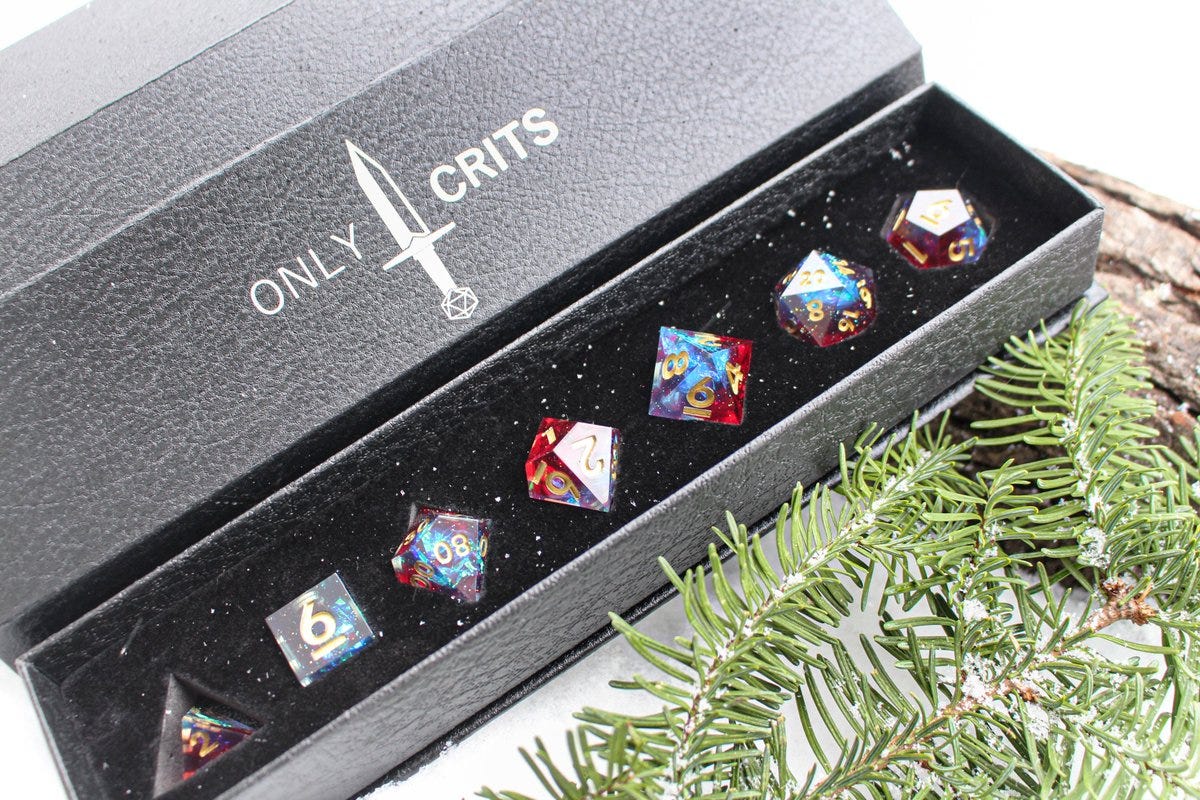
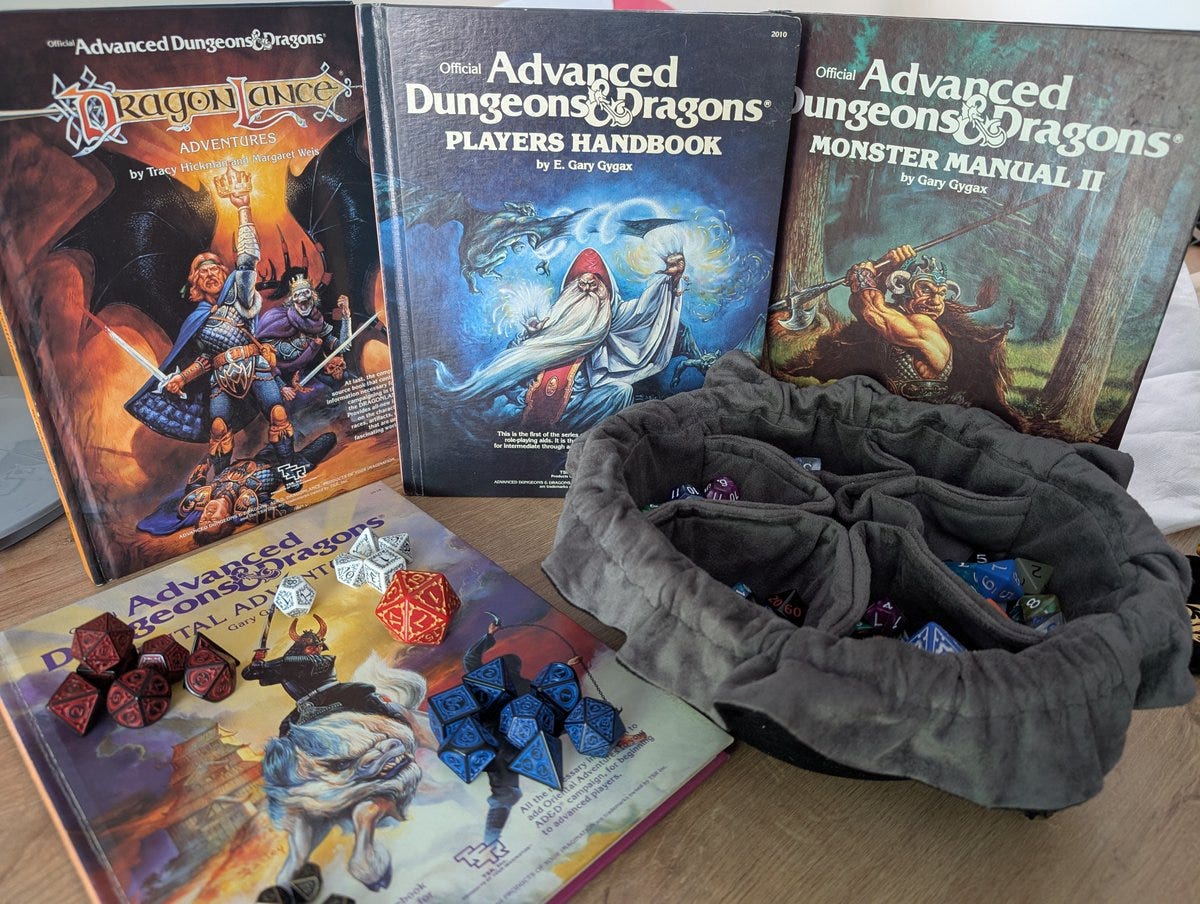
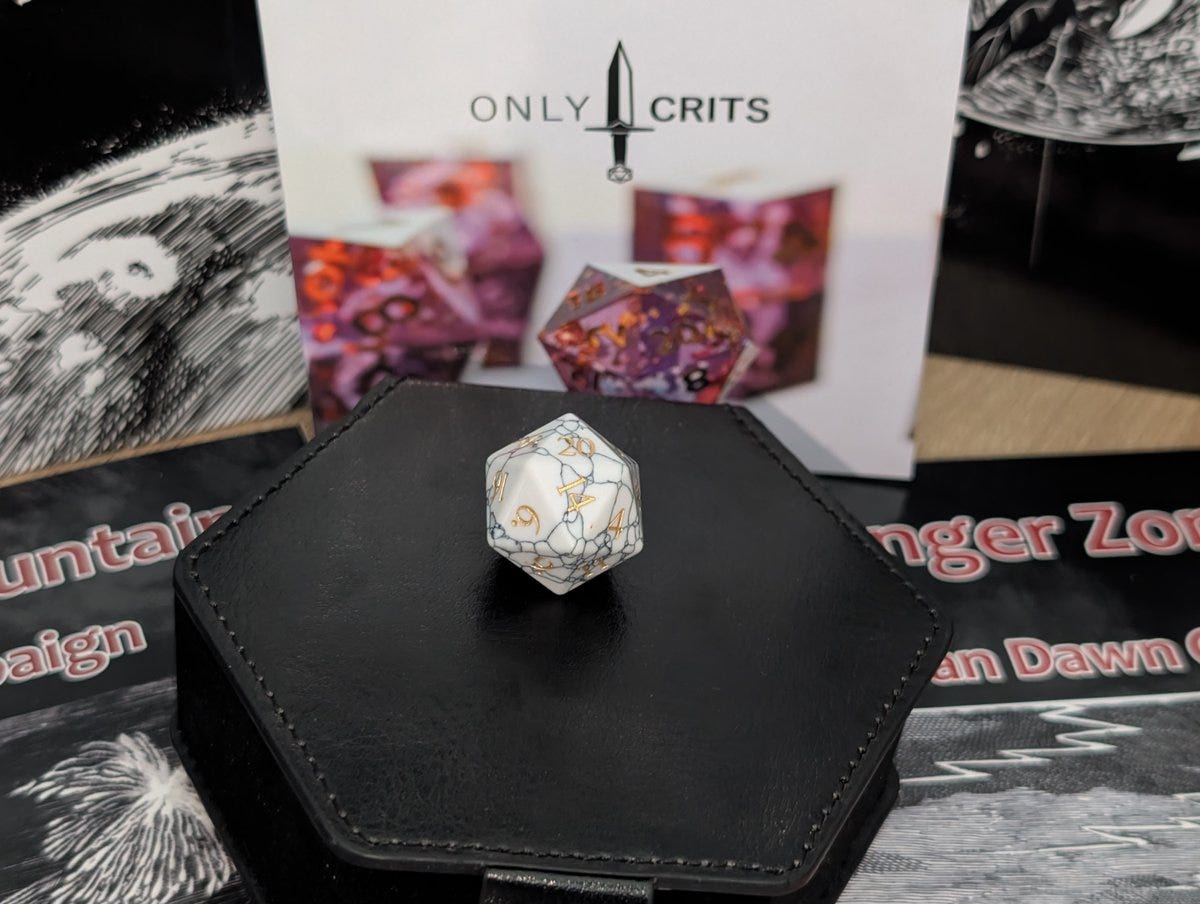
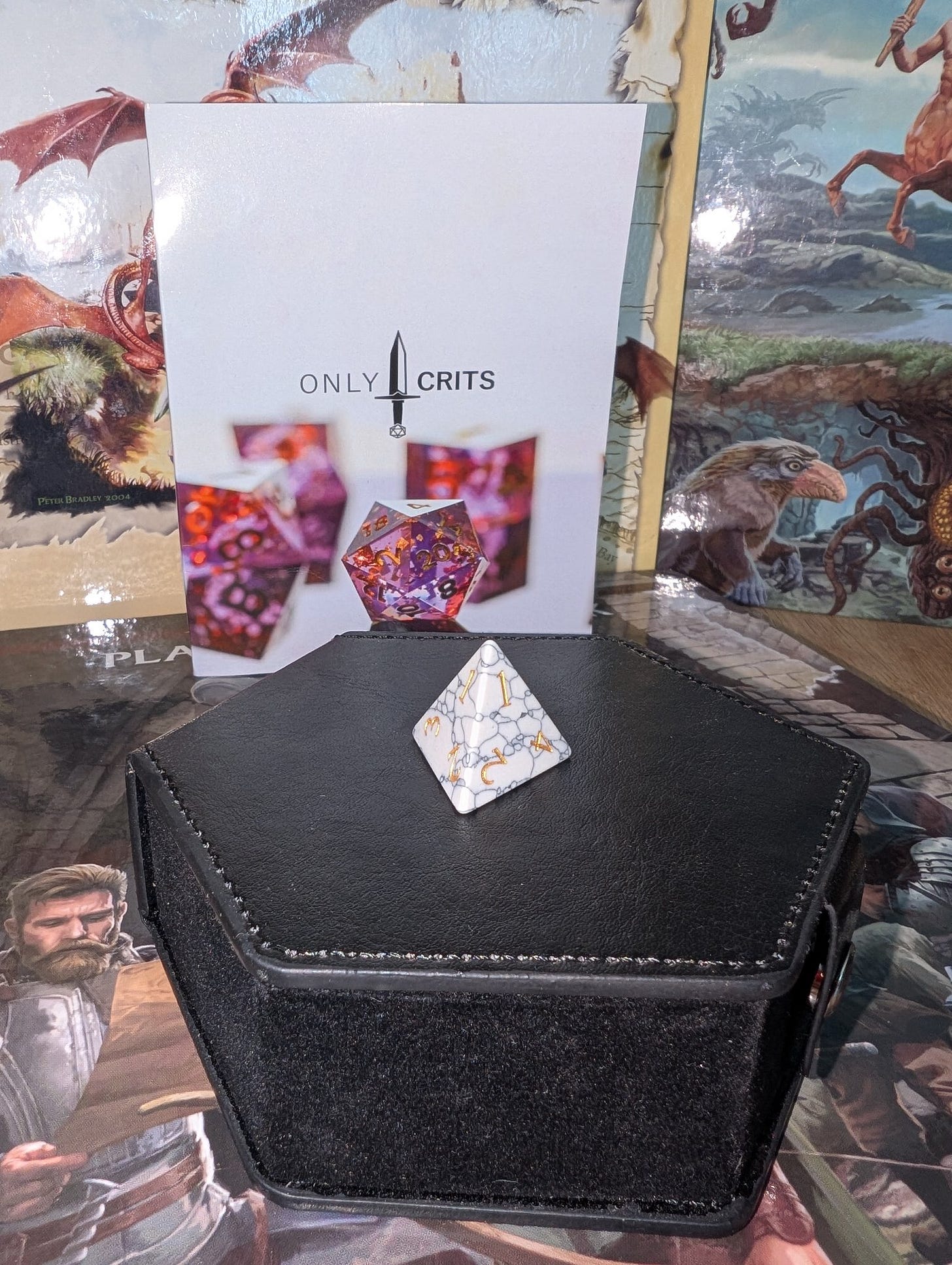
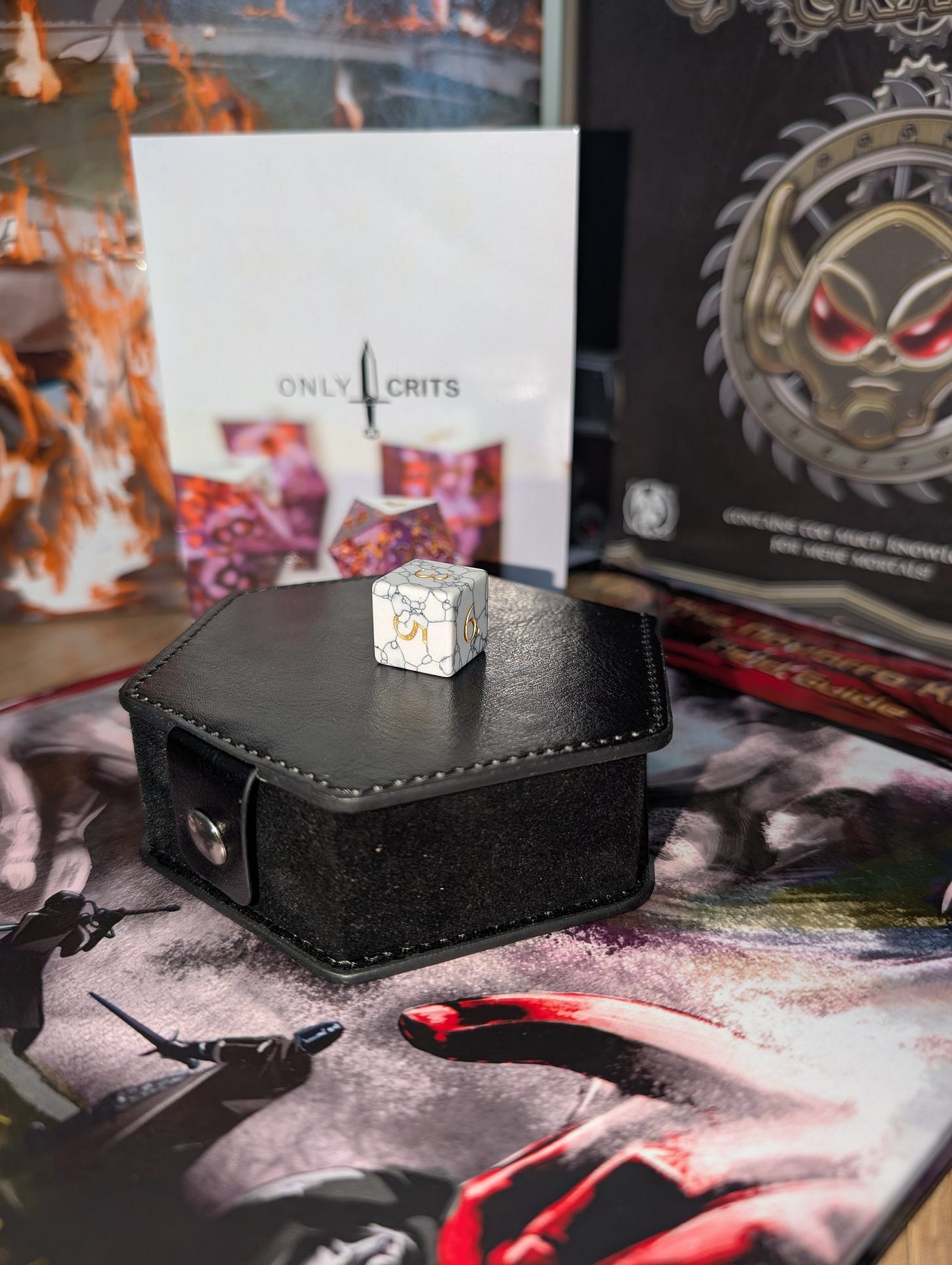
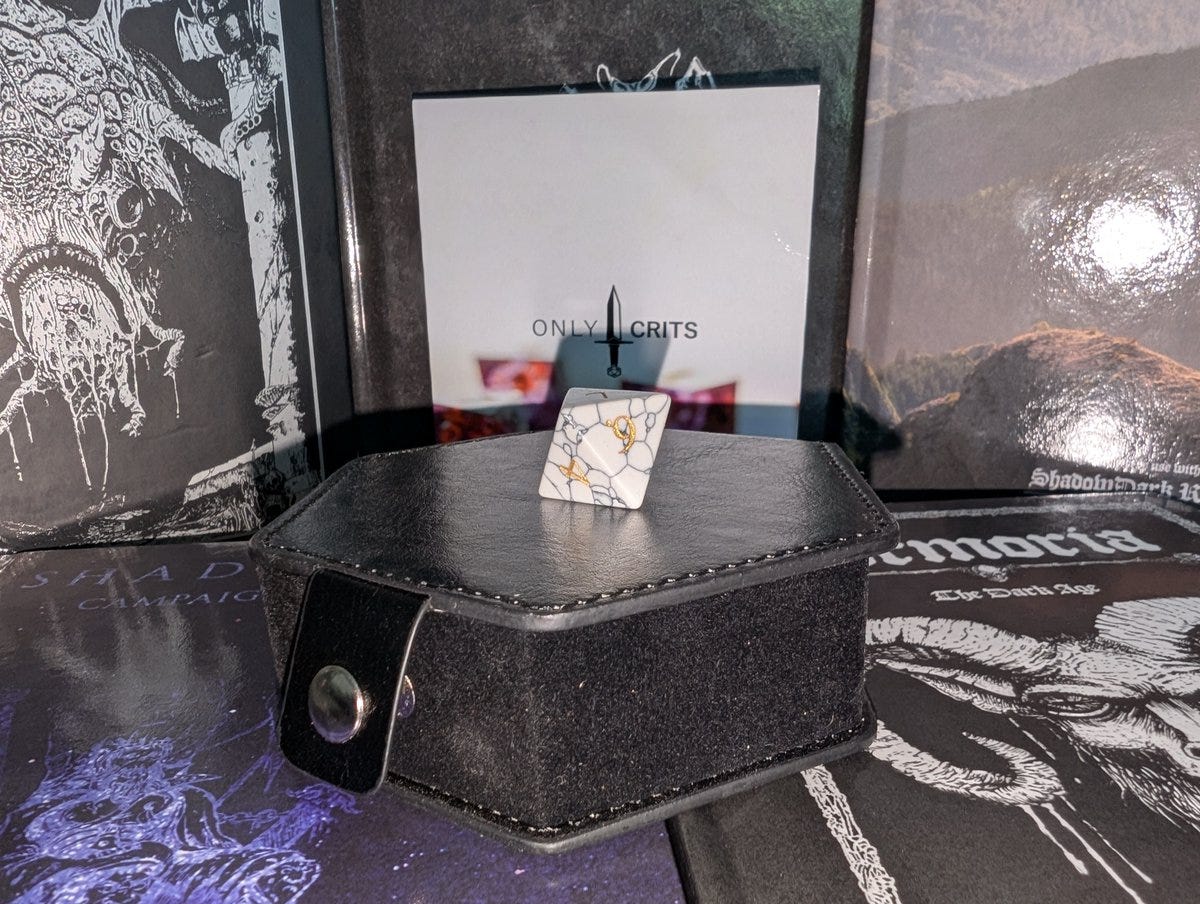
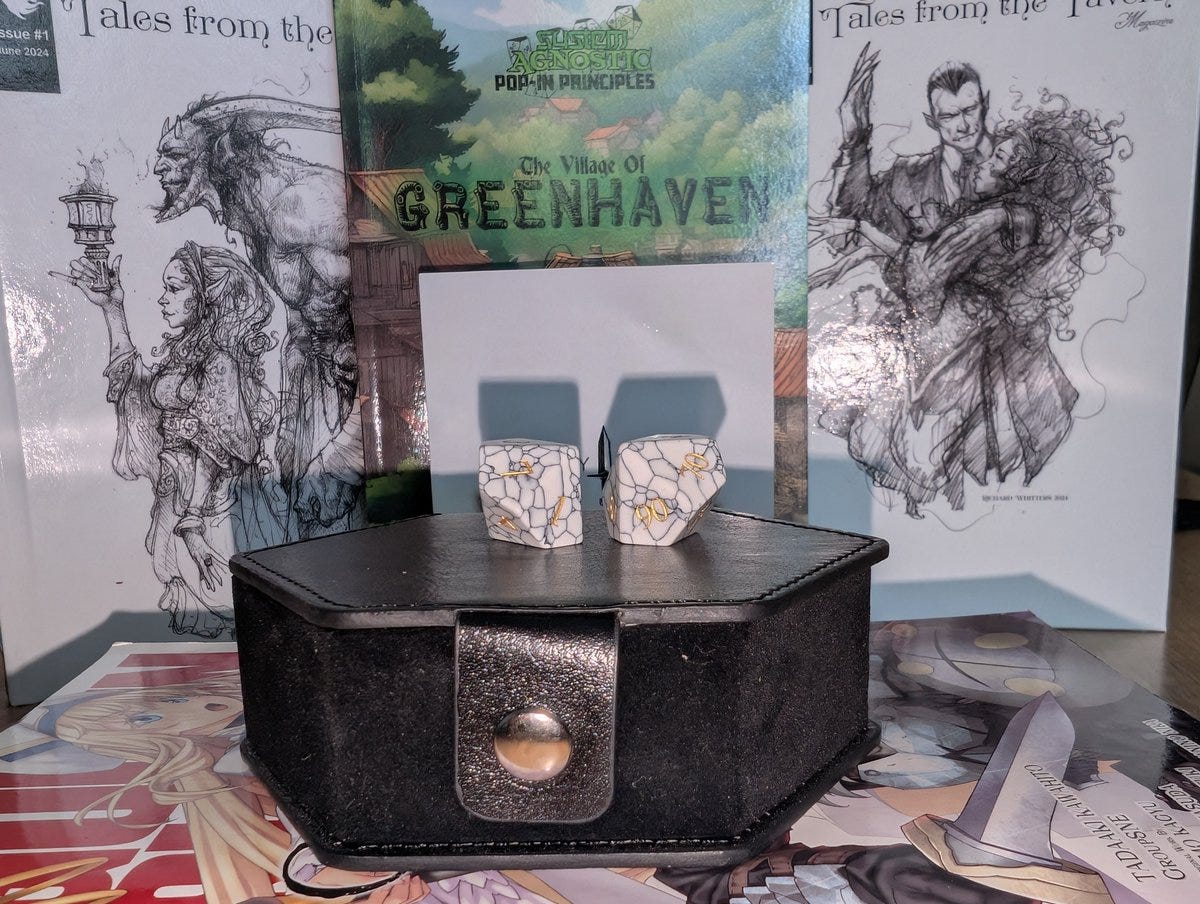
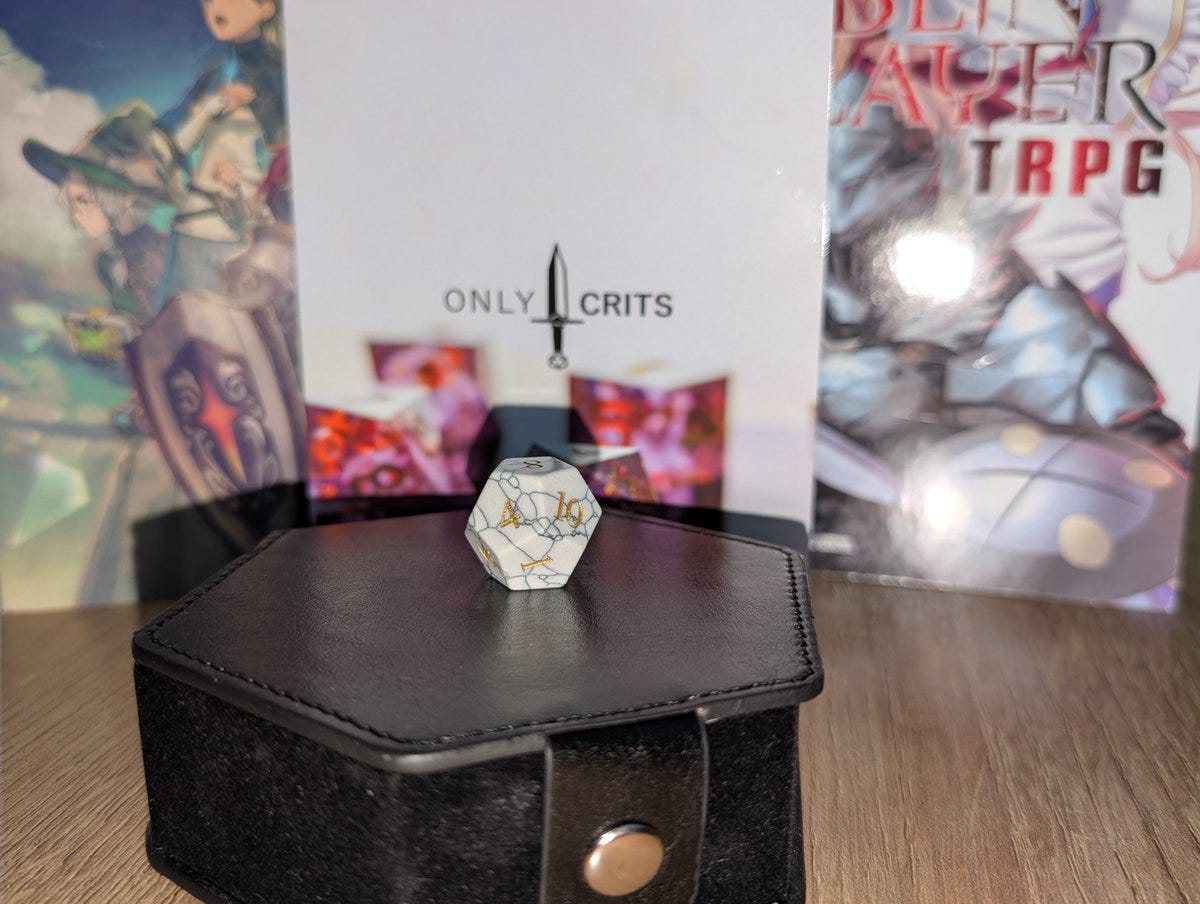
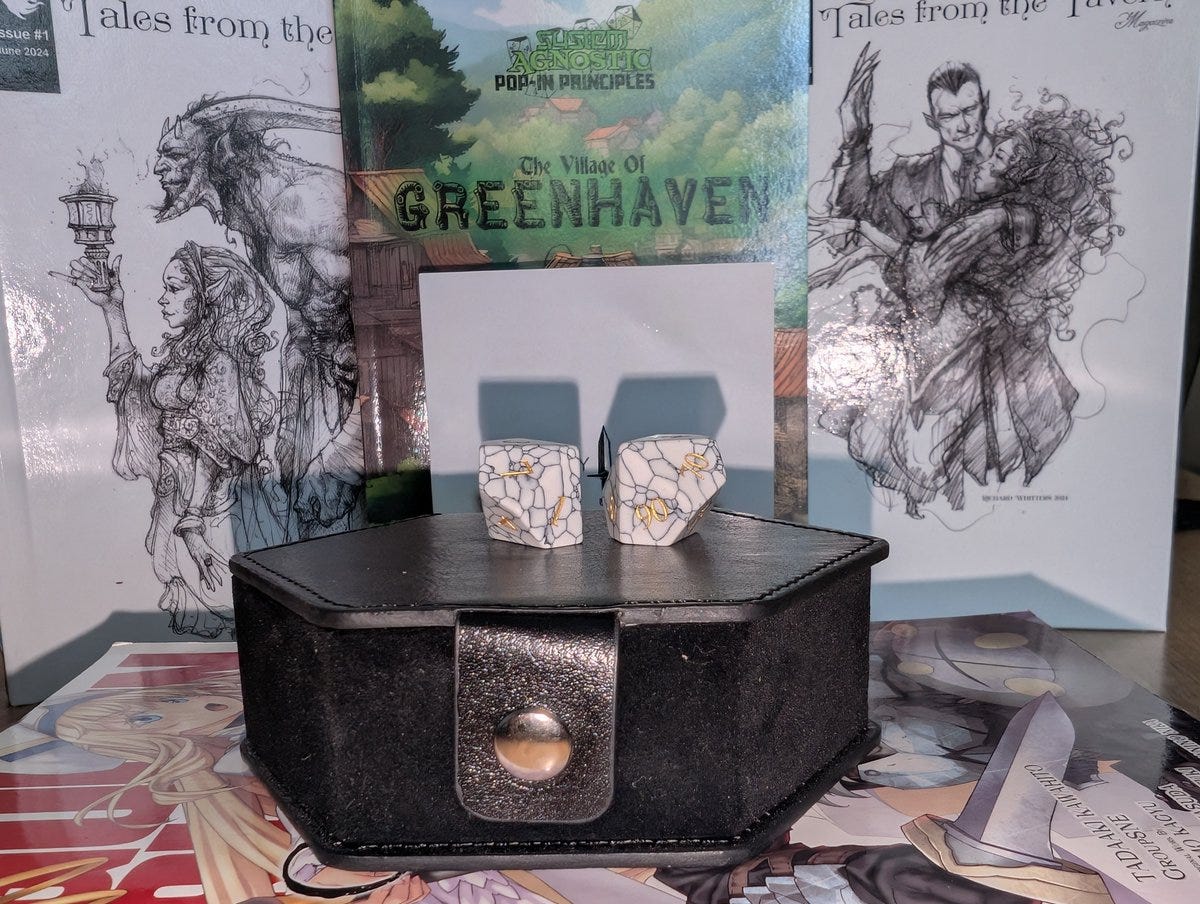
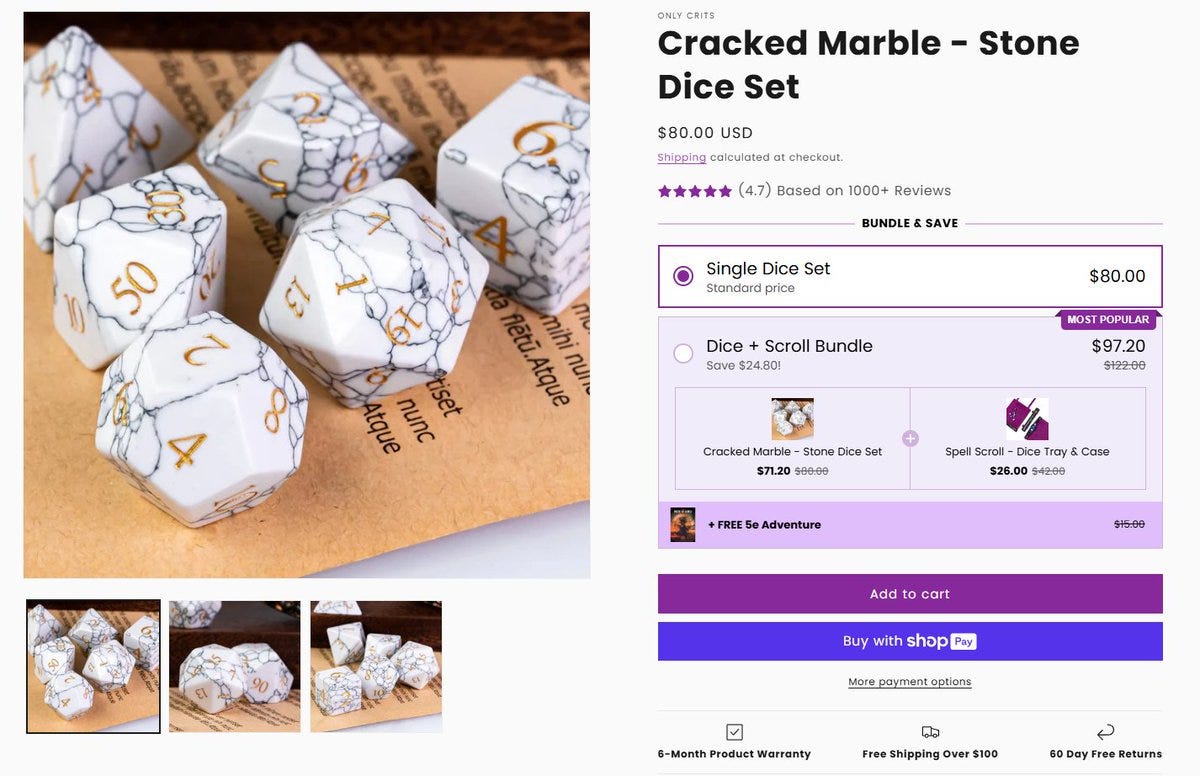
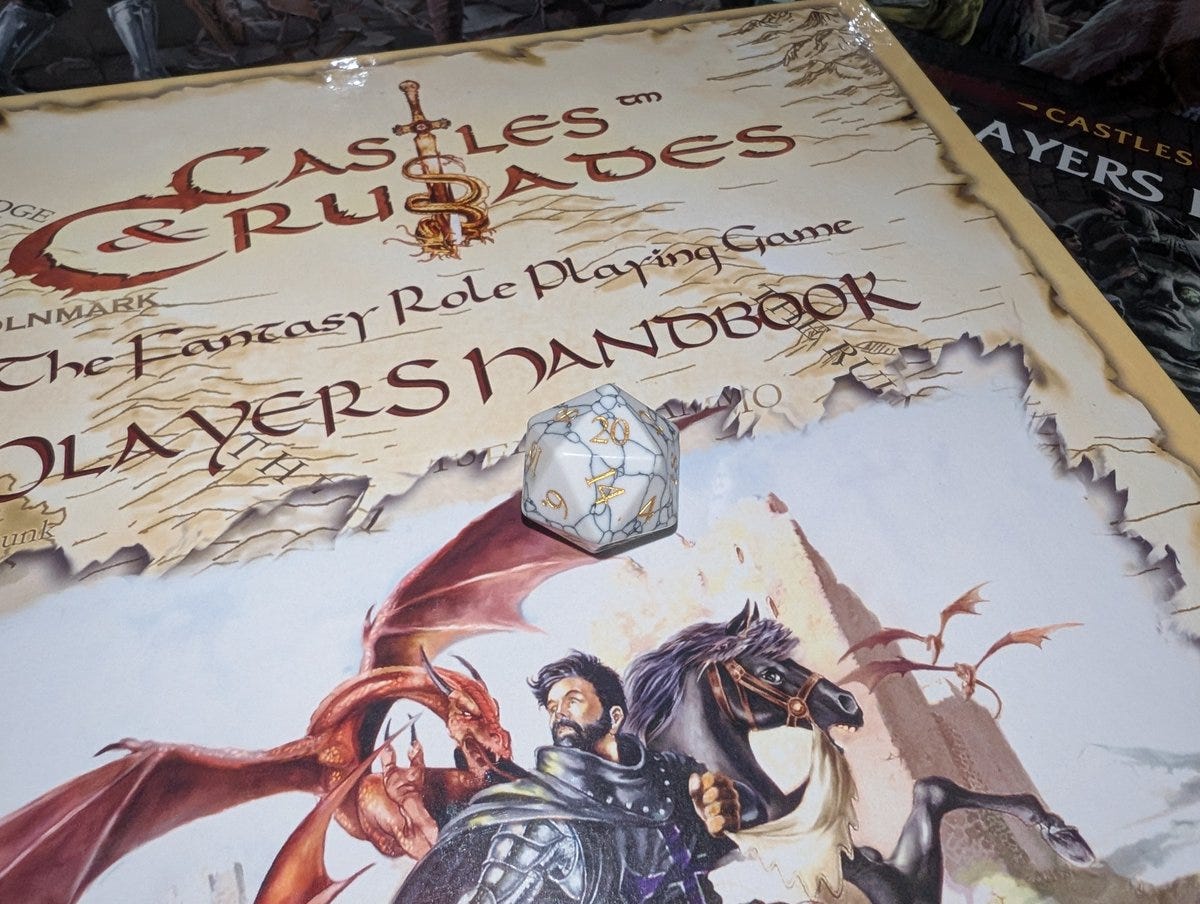
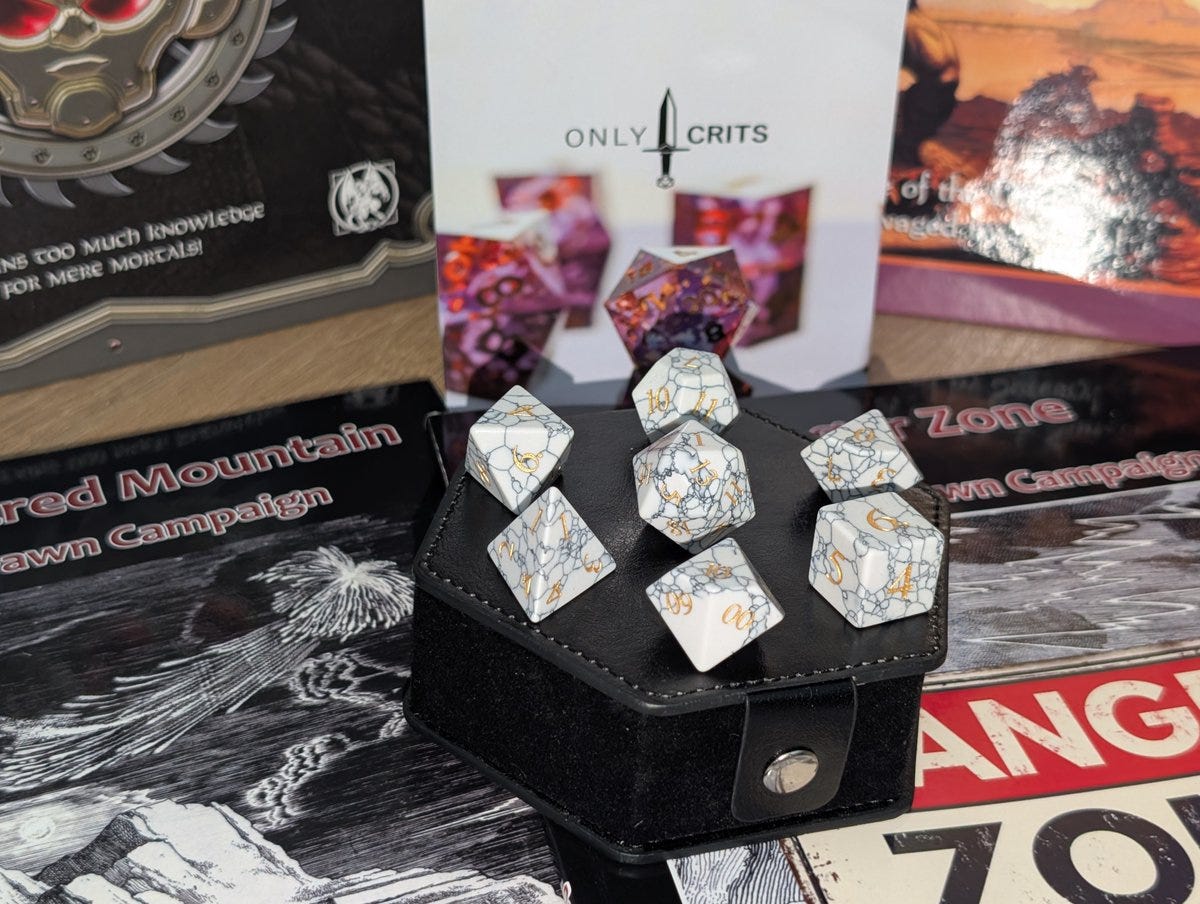
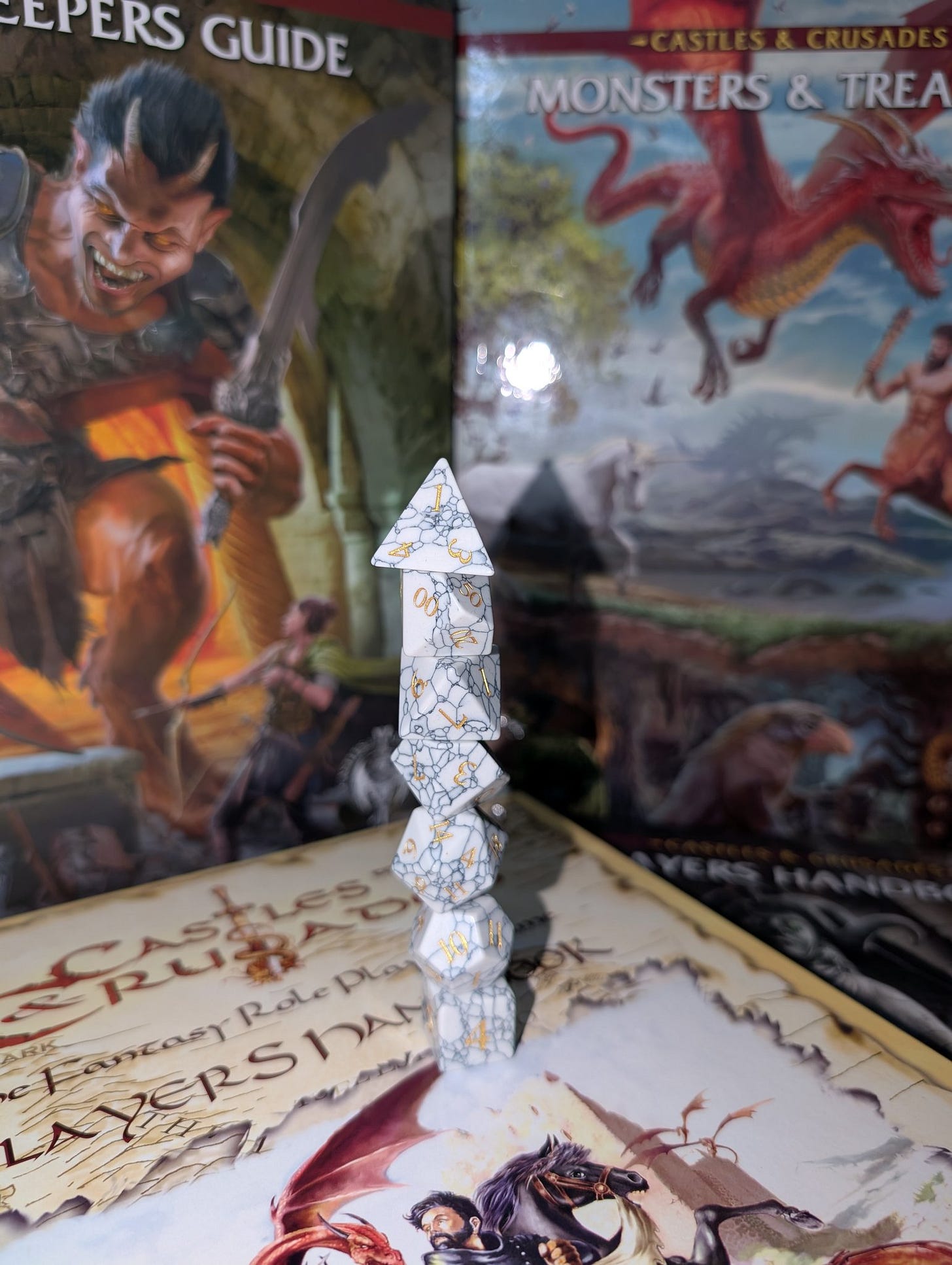
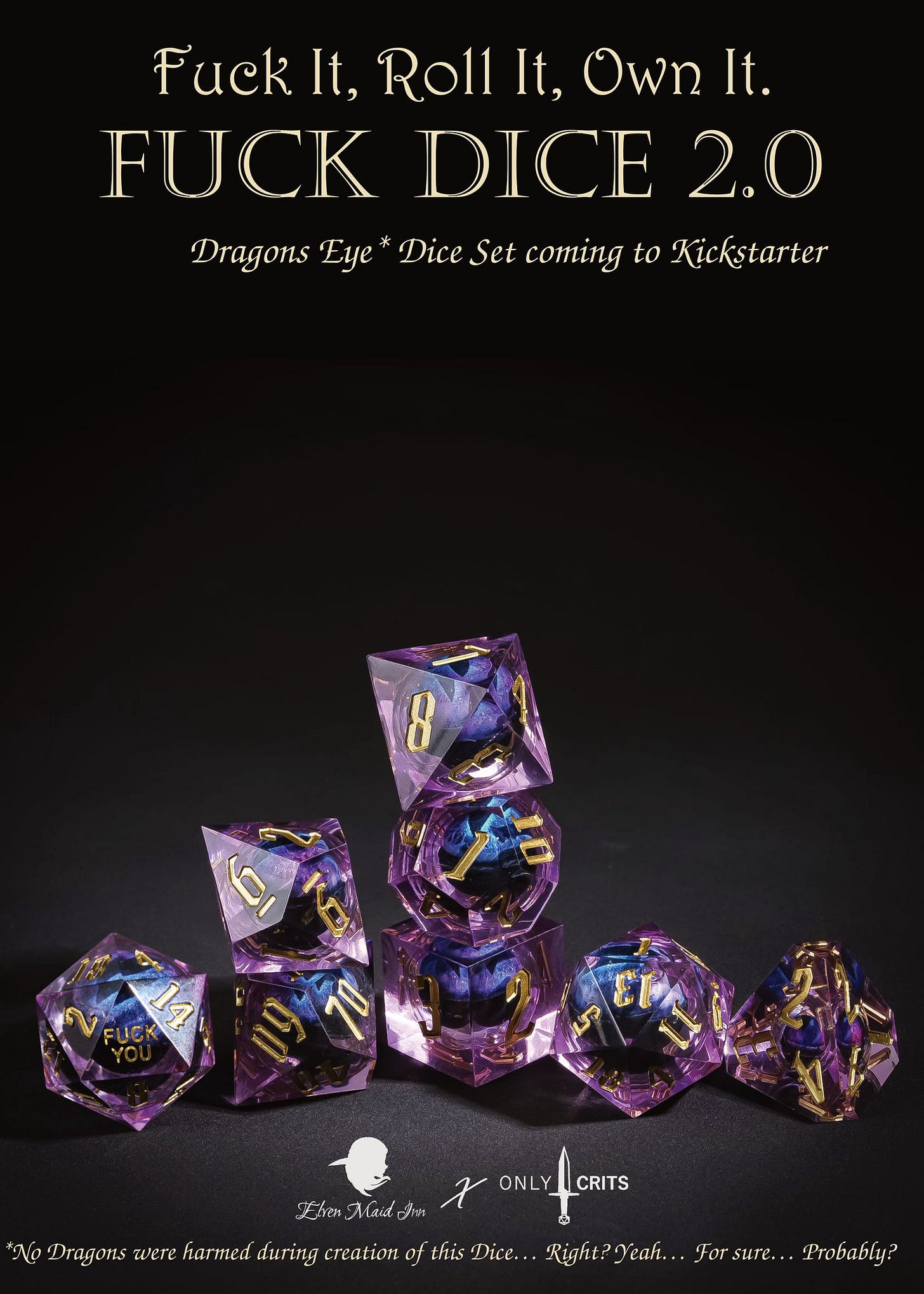
A great article.
The next set my family buys will be with Elf code!